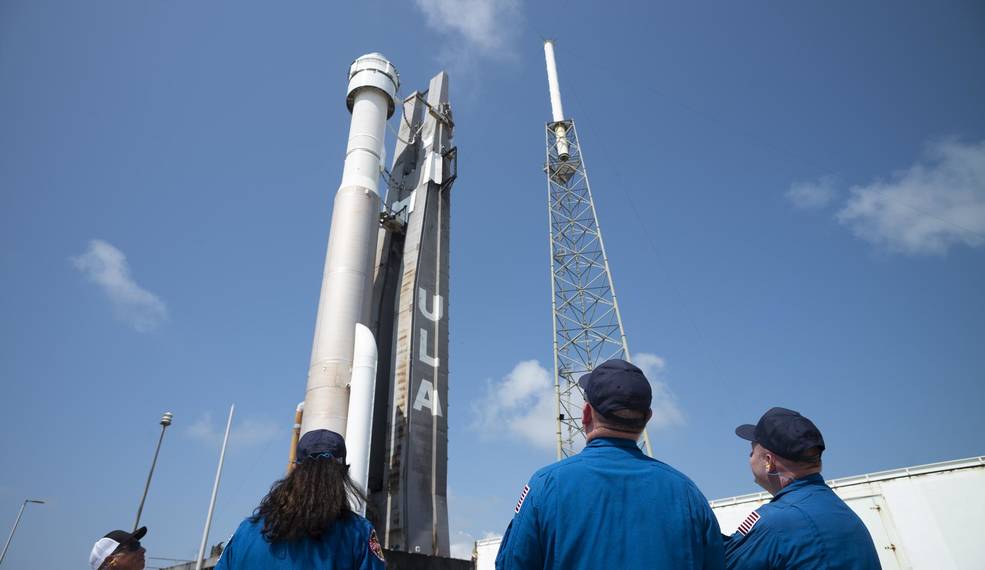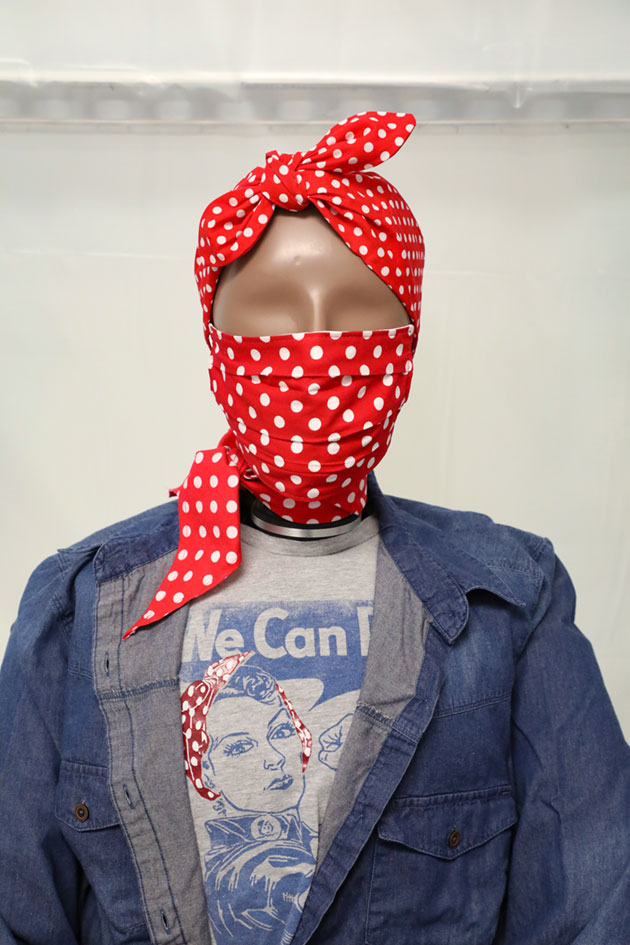3D printing service bureau Rapid Prototype and Manufacturing (rp+m) revealed via social media that a team of engineers at its Ohio headquarters had 3D printed the seats used by Boeing’s Starliner spacecraft, which launched to the International Space Station (ISS) on an un-crewed NASA flight test on May 19, 2022, and safely returned to Earth six days later.
“May was a busy month for rp+m,” reads the post on LinkedIn. “We are proud to have been a part of this monumental NASA – National Aeronautics and Space Administration and Boeing mission resulting in a successful starliner launch on May 19th and re-entry last week. Additive Manufacturing is ‘actually’ changing the world, friends!”
Furthermore, rp+m Additive Manufacturing Engineer Cameron Rogers didn’t only confirm that the company was behind the 3D printed seats for the Starliner, but he also said rp+m printed “three different sets which varied slightly in size.”
For the task, rp+m relied on Stratasys’ fused deposition modeling (FDM) technology which works with specialized 3D printers and production-grade thermoplastics to build strong, durable, and dimensionally stable parts. Specifically, Tom Leach, the commercial leader for FDM at Stratasys, said the team had used the F900 large-build volume printers and ULTEM 9085 resin 3D printing material to make the seats.

NASA astronauts watch as a United Launch Alliance Atlas V rocket with Boeing’s CST-100 Starliner spacecraft aboard is rolled out to the launch pad ahead of the Orbital Flight Test-2 mission. Image courtesy of NASA/Joel Kowsky.
Manufactured by Boeing, the Crew Space Transportation (CST)-100 Starliner is a class of two partially reusable spacecraft designed to transport crew to the ISS and other low Earth orbit (LEO) destinations as part of the aerospace giant’s contribution to NASA’s Commercial Crew Program. Along with SpaceX, Boeing was tasked with building a spacecraft to replace the Space Shuttle and free the U.S. of its decade-long reliance on Russian Soyuz capsules to access the orbiting station.
SpaceX gained ground after launching its first crewed mission aboard the Falcon 9 rocket in 2020 and is now regularly flying crew to the ISS. Boeing, however, has encountered a series of problems as it tries to get Starliner up and running for actual crewed missions.
This last test flight, known as Orbital Flight Test 2 (OFT-2), is a redo of the OFT-1 test, which launched in December 2019 but ended prematurely after the Starliner malfunctioned due to software adversities that caused the capsule to burn through propellant shortly after launch, failing to reach the ISS.
Boeing addressed the issues and got Starliner ready to launch on OFT-2 in the summer of 2021, but preflight checks shortly before the planned liftoff revealed 13 stuck valves on the capsule’s service module propulsion system that were not responding to commands. Since Aerojet Rocketdyne is the official hardware supplier for the Starliner’s service module propulsion system, the two companies have clashed over the defective fuel valves, stated a recent Reuters report.
Since then, Boeing spent roughly eight months working on solving the issues that delayed the flight. Once the valve issue on the spacecraft was resolved, OFT-2 finally got off the ground. That was great news for the rp+m team, which finally got to witness its 3D printed seats in orbit.
Aboard the seat was “Rosie the Rocketeer,” Boeing’s anthropometric test device named after World War II’s Rosie the Riveter as an ode to the women who have blazed a trail in aerospace and human spaceflight. Rosie was strapped into the Starliner for its flight test, this time to help the spacecraft maintain its center of gravity throughout the various phases of the flight.
“She is a 180 pound test device in European tan that is meant to represent the 50th percentile of human dimensions in height and weight,” said Melanie Weber, the subsystem lead for Crew and Cargo Accommodations on the Commercial Crew Program. “Rosie’s first flight provided hundreds of data points about what astronauts will experience during flight, but this time she’ll help maintain Starliner’s center of gravity during ascent, docking, undocking and landing. Even the car you drive must maintain its center of gravity or it could rollover.”
For OFT-2, spacecraft data capture ports previously connected to Rosie’s 15 sensors were used to collect data from sensors placed along the seat pallet, which is the infrastructure that holds all the crew seats in place. The sensors can capture data to characterize the motion of all four crew seats, explained Crew Module Chief Engineer Dan Niedermaier.
Wearing a Boeing blue spacesuit and red polka dot head scarf, Rosie also sported a matching face mask hand-sewn by 95-year-old Mae Krier, a real-life Rosie who helped build planes in a Boeing factory in Seattle when she was 17 years old.

The Starliner anthropometric test device, Rosie the Rocketeer, wore a hand-sewn Rosie-themed COVID-19 mask and an autographed Rosie scarf during the Starliner capsule’s Orbital Flight Test 2. Image courtesy of Boeing.
Boeing’s contract with NASA covers the unpiloted OFT-1 and OFT-2 missions and a Crew Flight Test expected to launch with two astronauts, Barry “Butch” Wilmore and Suni Williams, late this year or early next year. The first crewed test flight will lift off atop a United Launch Alliance Atlas V rocket from Space Launch Complex-41 at Cape Canaveral Space Force Station in Florida, just like OFT-2.
Once the test flights are completed, NASA will begin the final process of certifying the Starliner spacecraft and systems for crew missions to the space station. Regular, long-duration commercial crew rotation missions enable the agency to continue the research and technology investigations aboard the orbiting laboratory and lay the groundwork for future exploration of the Moon and Mars.
Subscribe to Our Email Newsletter
Stay up-to-date on all the latest news from the 3D printing industry and receive information and offers from third party vendors.
You May Also Like
Precision at the Microscale: UK Researchers Advance Medical Devices with BMF’s 3D Printing Tech
University of Nottingham researchers are using Boston Micro Fabrication‘s (BMF) 3D printing technology to develop medical devices that improve compatibility with human tissue. Funded by a UK grant, this project...
3D Printing Webinar and Event Roundup: April 21, 2024
It’s another busy week of webinars and events, starting with Hannover Messe in Germany and continuing with Metalcasting Congress, Chinaplas, TechBlick’s Innovation Festival, and more. Stratasys continues its advanced training...
3D Printing Webinar and Event Roundup: March 17, 2024
It’s another busy week of webinars and events, including SALMED 2024 and AM Forum in Berlin. Stratasys continues its in-person training and is offering two webinars, ASTM is holding a...
3D Printed Micro Antenna is 15% Smaller and 6X Lighter
Horizon Microtechnologies has achieved success in creating a high-frequency D-Band horn antenna through micro 3D printing. However, this achievement did not rely solely on 3D printing; it involved a combination...





























